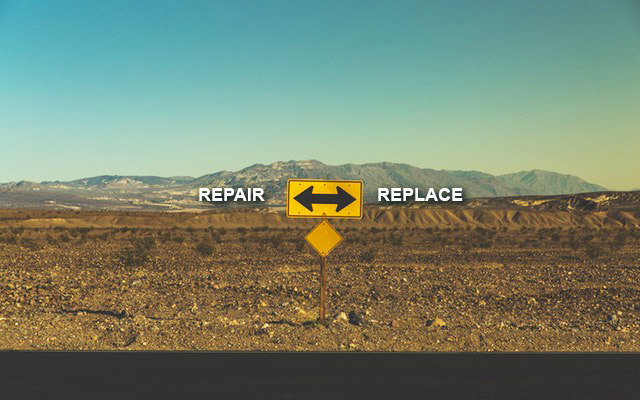Plant systems and equipment cannot last forever, especially as new technology and regulations demand more from them. Many industrial plants in the United States were built decades ago and were expected to operate for about 20 to 40 years; however, many still operate today – several years past their expected life span. Much of this equipment is used for its initial design specification, but may not be capable of functioning as well as it used to or even as it was intended to operate. It can be difficult to know when to continue maintaining or repairing aging equipment or when to replace it.
Equipment ages past its prime for many reasons; the most common of which include erosion, corrosion, and fatigue. Plants may have changed their processes to adapt over time but have not been able to configure components with these variations. For example, some plants have increased their capacity and operating pressures which puts a strain on aging equipment, especially in the case of sensitive components like safety relief valves and rupture discs. It is estimated that about one-third of relief valves fail to function as intended because of these changing conditions. Back pressures that were not initially present at the original design may not be considered by those currently running the plant. This is also present in cases where management changes over the years and new conditions are not taken into consideration.
Furthermore, changes in regulations also impact aging plants. For example, the change in requirements as dictated by the Clean Air Act and other governmental energy regulations further impact the decision to repair, upgrade, or replace equipment.
Repair/Upgrade vs. Replacement
When deciding whether to hang on to a piece of equipment through regular maintenance or spend the funds to upgrade or replace it, managers must take into account a number of factors. These factors vary per piece of equipment but generally include:
- Age of the equipment
- How many hours it has been in use
- Condition of the operating environment
- Expected life cycle with or without repairs/upgrade
This combination determines how long equipment may operate to specifications before the cost of general maintenance and repair exceeds the cost of replacing the equipment. This estimation should also consider the production and operator costs associated with any equipment downtime and the need for supplemental rental equipment.
It is also important to establish maintenance productivity and its cost as a percentage of replacement asset value, or RAV. To use an example, a plant that spends $300,000 per year to maintain equipment that could be replaced or upgraded for $10,000,000 has a 3% RAV.
Misdirected Management of Aging Equipment
It is estimated that over half of typical maintenance activity in plants is unnecessary, including routine equipment checks, preventive maintenance, and more. The reality is that many instrument work orders do not result in corrective action, as it is common to find that nothing is initially wrong with the equipment. While many valves are typically removed for rebuilding, oftentimes, only a percentage really need this extensive service. Many plants decide to re-calibrate transmitters before installation and then again each year even though original calibration is more accurate and can remain stable for five to ten years.
It is estimated that a process plant’s maintenance department averages about a third of their efforts on wrench time. The rest of their time and effort is dedicated to data processing, work orders, and other paperwork. Using automated tools to perform these tasks can increase the wrench time to approximately half or more. When rushed, sometimes wrench time can actually lead to counterproductive measures. Problems can arise during reassembly, misalignment, incorrect tightening, and other mistakes. It is estimated that up to 70% of equipment failures happen after such maintenance.
Considerations in Aging Equipment Management
It is essential to establish the proper practices to ensure that aging systems and equipment continue to operate reliably. The key aspects of maintenance management include answering the following questions:
- Is equipment classified according to its function?
- Are suitable performance standards established and being met?
- Is there a plan for inspection, maintenance, and testing in place?
- Is there a consistent backlog of the above for each piece of equipment?
- Is there a plan for the control and management of overrides?
- Is there a reliable provider for maintenance and repairs established and available, even if it is not in-house?
- Is there a plan in place should a shutdown need to occur?
- Are there records of previous equipment failures easily accessible should the equipment fail again?
The trend in plants today is a move from maintenance that is time-based to condition-based. The goal is to better pinpoint what equipment needs to be maintained, upgraded, or replaced immediately by utilizing sensors and advanced data analysis. Rather than making the decision to replace equipment every designated number of years, operators can look at results and correct deficiencies more easily before the equipment fails.
Use our Valve Forum to continue the discussion about how to manage aging equipment.





Who wrote “Repair or Replace? Considerations for Managing Aging Equipment”?